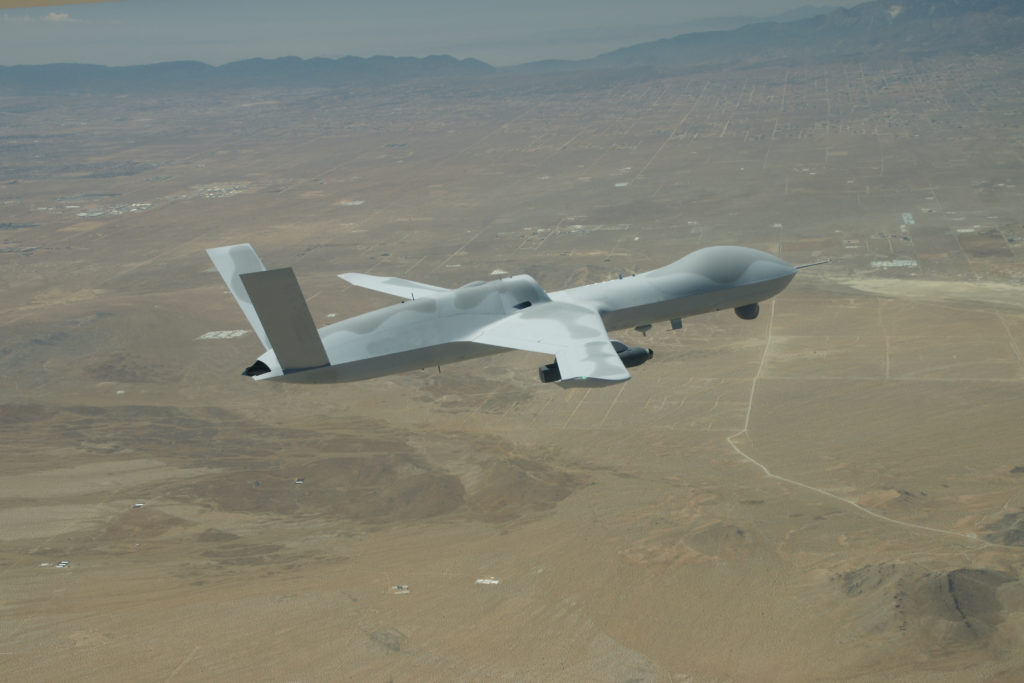An F-22 pilot controlled an MQ-20 drone from the fighter’s cockpit last month, General Atomics announced Nov. 17—a preview of the Air Force’s vision for Collaborative Combat Aircraft.
General Atomics partnered with F-22 maker Lockheed Martin and L3Harris, which provided radios and data links, for the self-funded demonstration, which took place Oct. 17 at the Nevada Test and Training Range.
During the flight, the F-22 communicated with the MQ-20 via L3Harris’ software-defined radios and BANSHEE data link. The pilot controlled the drone via a tablet and open architecture software called GRACE, and the MQ-20 flew using General Atomics’ own mission autonomy software.
The companies did not release any imagery of the flight or further details on the mission. The Air Force did not immediately respond to queries, but it did establish an Experimental Operations Unit at Nellis Air Force Base, Nev., earlier this year to work on concepts and details for manned-unmanned teaming.
In a release, General Atomics suggested the flight will be part of a “series of flight demonstrations performed using internal research and development funding to showcase ‘the art of the possible’ between manned and unmanned teaming.”

General Atomics is competing with Anduril Industries for the first increment of the Air Force’s CCA program, which will produce semi-autonomous drones that fly alongside manned fighters as “loyal wingmen” under the fighter pilots’ command and control.
Both GA and Anduril have flown their drones, the YFQ-42A and YFQ-44A, and the Air Force anticipates making a production decision in 2026. But in the interim, General Atomics saw the opportunity to jump ahead and start testing how Air Force fighters will interact with the unmanned systems, a company spokesperson said.
“We don’t want to wait for the CCA fleet to be fielded to begin leaning in on F-22 teaming. We already know the F-22 will play a critical role in crewed-uncrewed teaming operations, and General Atomics is in a unique position to get started now,” the spokesperson said.
In its “Long Term Fighter Force Structure” report to Congress earlier this year, the Air Force noted that the “F-22 remains the threshold platform for CCA,” meaning it is the primary fighter with which the service is looking to pair CCA drones.
And while General Atomics is still testing how its YFQ-42A drone flies on its own, “the MQ-20 Avenger, tricked out with mature mission autonomy software, is a perfect CCA surrogate and allows us to move fast and move first,” the spokesperson said.
General Atomics has used the MQ-20 as a testbed before, partnering with Shield AI to use that firm’s “Hivemind” mission autonomy software to fly the drone.
The flight test with the F-22 is just the latest in a back-and-forth between GA and Anduril as the firms tout their progress on CCA.
“There are companies all over the world making big promises while they figure all of this out for the first time: how to build an airplane, how to incorporate autonomy, how to team that with manned aircraft,” the General Atomics spokesperson said. “We’ve been putting our own money into uncrewed jets for 17 years. This is just one more milestone in a long history of leaning forward.”


